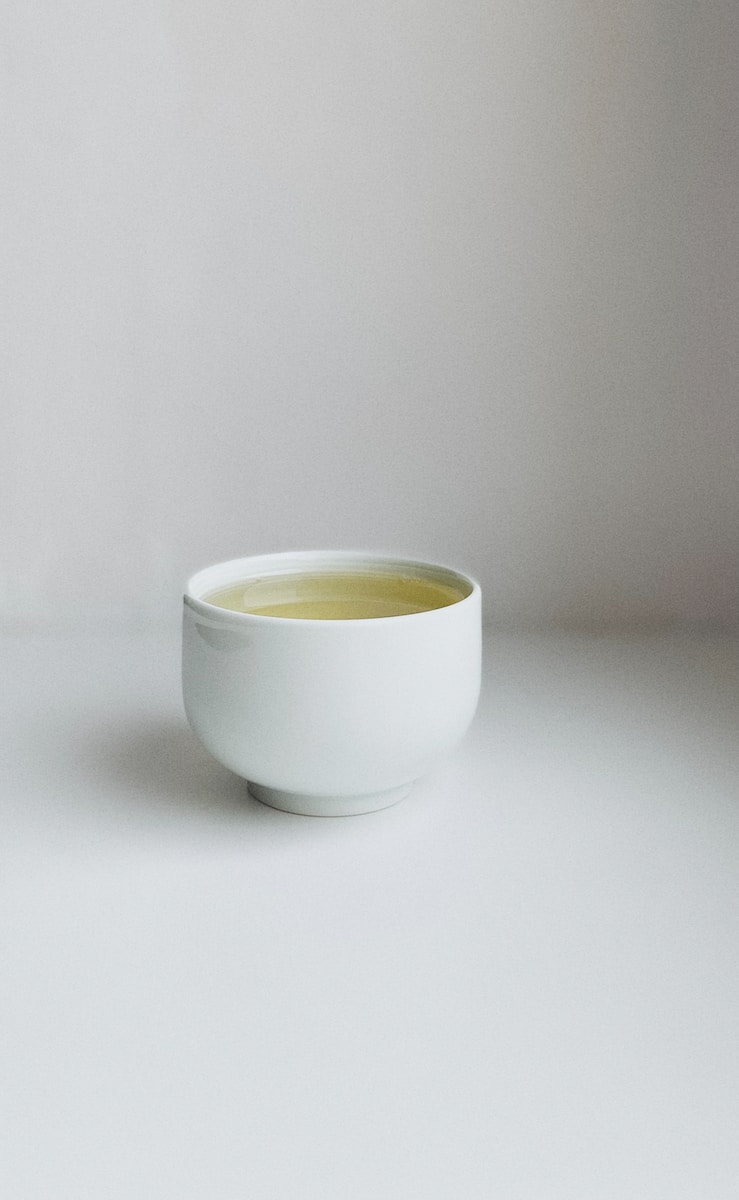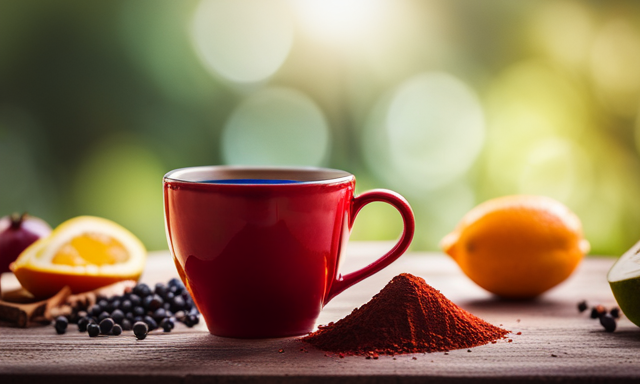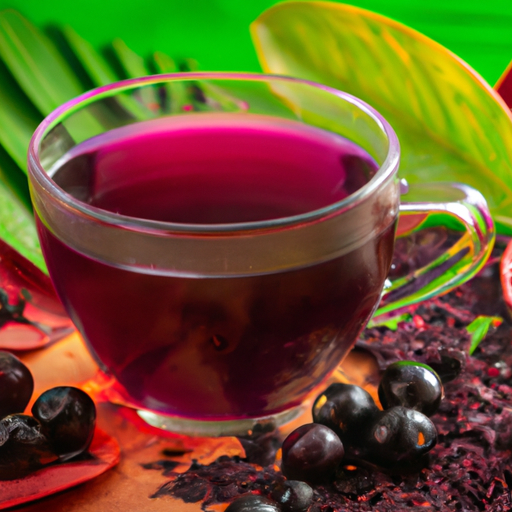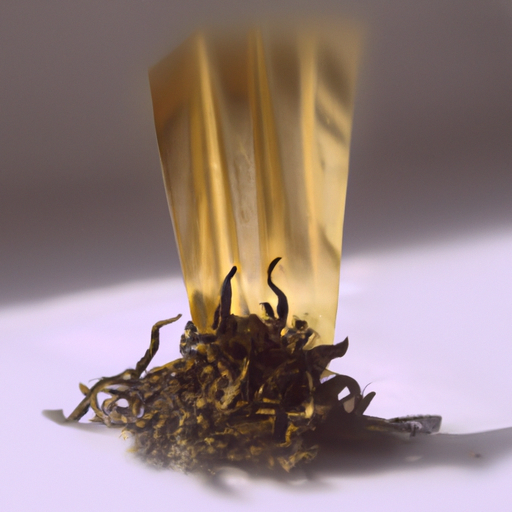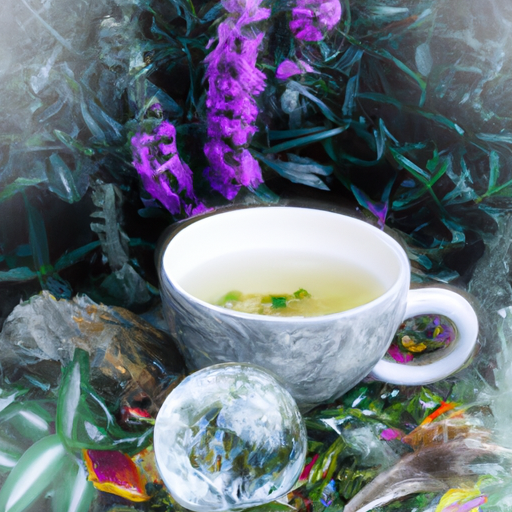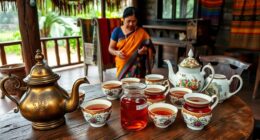As I sit here, sipping on a cup of white tea, the delicate flavors dance on my taste buds, unveiling a world of subtle delights.
White tea, derived from the fresh leaf buds of the Camellia sinensis plant, is a beverage that transcends the ordinary. Its origins trace back to the Fujian Province of China, but today, it is cultivated in various regions across the globe.
White tea comes in different varieties, each with its own unique qualities. From the renowned Silver Needle and White Peony to the exquisite Monkey Picked White Tea and Darjeeling White, there is a white tea to suit every discerning palate.
Beyond its enchanting taste, white tea boasts an array of health benefits. Rich in antioxidants such as catechins and polyphenols, it aids in regulating immunity and promotes overall well-being. With its mild, light, and sweet flavor, devoid of any astringency, white tea offers a rejuvenating experience like no other.
Join me as we embark on a journey to explore the captivating world of white tea. Discover the varieties, uncover the secrets of its production, and delve into the plethora of health benefits it bestows. Get ready to indulge in the delicate delights of white tea.
Key Takeaways
- White tea is derived from the fresh leaf buds of the Camellia sinensis plant and is cultivated worldwide.
- There are several varieties of white tea, including Silver Needle, White Peony, Shou Mei, Gong Mei, Monkey Picked White Tea, and Darjeeling White, each with its own unique characteristics and brewing methods.
- White tea has a mild, light, and sweet taste with no astringency. It is recommended to brew white tea at a slightly higher water temperature for 4-6 minutes.
- White tea has health benefits for skin health, including antioxidants that reduce signs of aging and promote a youthful complexion. It is also linked to weight management due to its catechins that boost metabolism.
Types of White Tea
I’ve learned that there are several types of white tea, including Silver Needle, White Peony, Shou Mei, Gong Mei, Monkey Picked White Tea, and Darjeeling White. Each of these varieties has its unique characteristics and brewing methods.
Silver Needle, also known as Baihao Yinzhen, is made from only the young tea buds and is highly prized for its delicate flavor and silver-white appearance.
White Peony, or Bai Mudan, is a combination of young tea buds and leaves, resulting in a slightly stronger taste with a hint of fruitiness.
Shou Mei and Gong Mei teas are made from more mature leaves and have a bolder flavor profile.
Monkey Picked White Tea, as the name suggests, is a rare and highly sought-after variety harvested by trained monkeys in China’s Fujian province. It has a complex flavor profile with floral and fruity notes.
Lastly, Darjeeling White, grown in the Darjeeling region of India, offers a unique muscatel flavor.
When brewing white tea, it is recommended to use slightly higher water temperatures than green tea, around 175-185°F (79-85°C). The brewing time is typically 4-6 minutes, allowing the delicate flavors to develop fully. The resulting cup of white tea is known for its mild, light, and sweet taste, with no astringency.
Production and Origins
Grown in different regions around the world, the process of cultivating and harvesting white tea leaves involves careful attention to detail and expertise. White tea cultivation traditionally originated from the Fujian Province in China, but it is now produced in other Chinese provinces, as well as India, Sri Lanka, South Asia, and even Rwanda.
The favorable climate and soil conditions in these regions contribute to the unique flavor and quality of white tea. To produce white tea, the youngest tea buds, shoots, or tips of the tea plant are carefully plucked and then lightly withered and dried. This minimal processing allows the delicate flavors and natural nutrients of the tea leaves to be preserved.
The result is a smooth, delicate, and sweet brew that is highly sought after by tea connoisseurs worldwide.
Health Benefits
One cannot deny the numerous health benefits associated with consuming white tea. This delicate and flavorful tea is not only a pleasure to drink, but it also offers several advantages for our well-being. White tea has been found to have positive effects on skin health, thanks to its high concentration of antioxidants. These antioxidants help protect the skin from damage caused by free radicals, reducing the signs of aging and promoting a youthful complexion. Additionally, white tea has been linked to weight management. It contains catechins, a type of antioxidant that can help boost metabolism and aid in weight loss. Incorporating white tea into a balanced diet and exercise routine may assist in achieving and maintaining a healthy weight. With its delightful taste and impressive health benefits, white tea is truly a beverage worth exploring.
| White Tea and Skin Health | White Tea and Weight Management |
|---|---|
| High in antioxidants, which help protect the skin from damage caused by free radicals. | Contains catechins, a type of antioxidant that can help boost metabolism and aid in weight loss. |
| Reduces signs of aging and promotes a youthful complexion. | Can be incorporated into a balanced diet and exercise routine to assist in achieving and maintaining a healthy weight. |
Frequently Asked Questions
How is white tea different from other types of tea?
White tea is distinct from other teas due to its minimal processing, which preserves its delicate flavor and high nutrient content. It is rich in antioxidants like catechins and polyphenols, offering numerous health benefits.
What is the best way to brew white tea for optimal flavor?
To brew white tea for optimal flavor, I recommend using a brewing technique that involves steeping the tea leaves in water that is just below boiling temperature for 4-6 minutes. This allows the delicate flavors to fully infuse into the water.
Can white tea be enjoyed with milk or sugar?
Yes, white tea can be enjoyed with milk or sugar, although it is typically consumed without any additional ingredients to fully appreciate its delicate flavor. White tea recipes can also incorporate other flavors like fruits or herbs. The best time to drink white tea is in the morning or afternoon for a gentle caffeine boost.
Are there any specific health conditions or medications that could interact negatively with white tea consumption?
Interactions and precautions should be considered when consuming white tea. Certain health conditions and medications may have negative interactions. It is important to consult with a healthcare professional for personalized advice.
Are there any cultural or historical traditions associated with the consumption of white tea?
Cultural traditions and historical significance are associated with white tea consumption. It has been a part of Chinese tea ceremonies for centuries and is highly regarded for its delicate flavor and health benefits.
Conclusion
After exploring the world of white tea, I’m left in awe of its delicate delights. Each variety, from the Silver Needle to the Darjeeling White, offers a unique flavor profile that’s both mild and sweet. The production and origins of white tea, rooted in the Fujian Province of China, have expanded to various regions worldwide.
Not only is white tea a treat for the taste buds, but it also boasts numerous health benefits, thanks to its rich antioxidant content. So why wait? Indulge in the exquisite world of white tea and experience its wonders for yourself.

